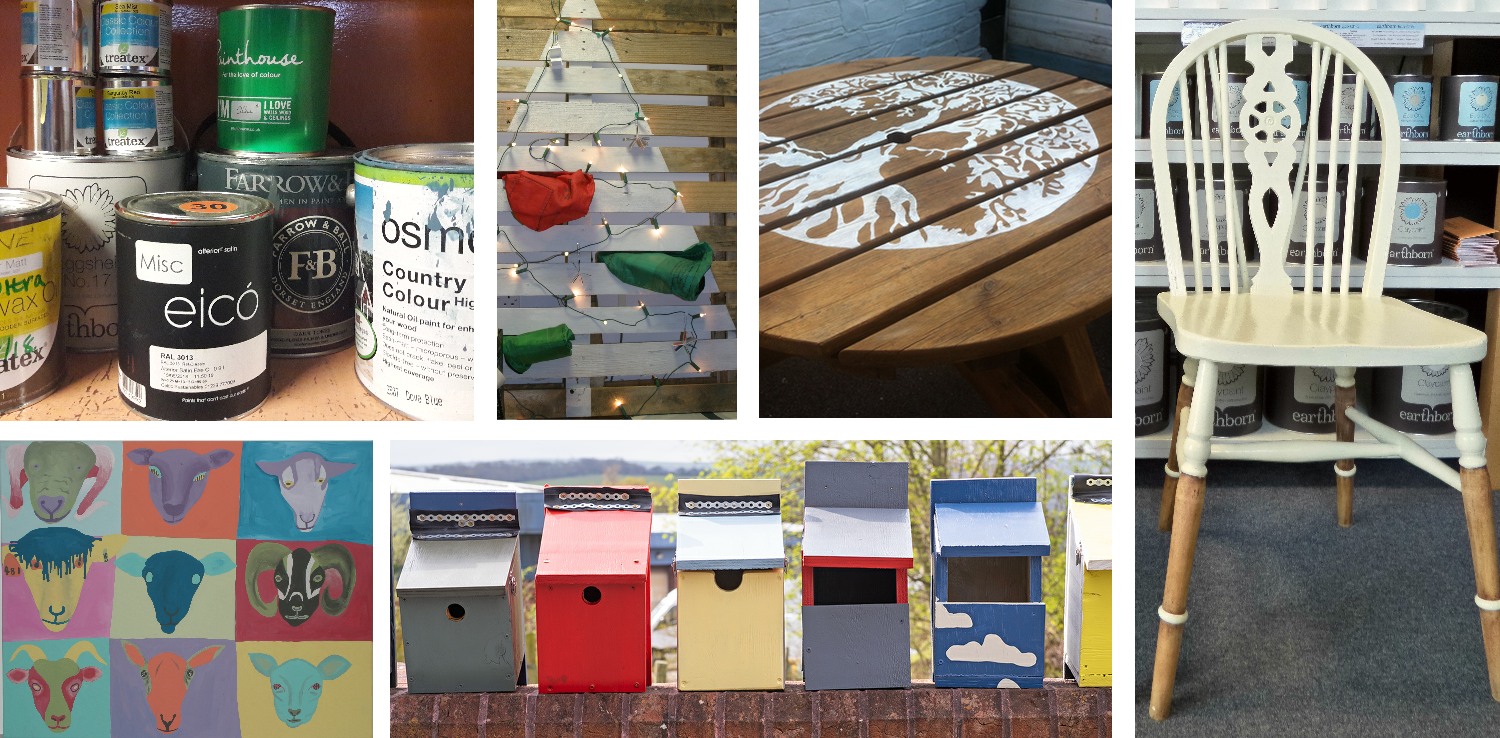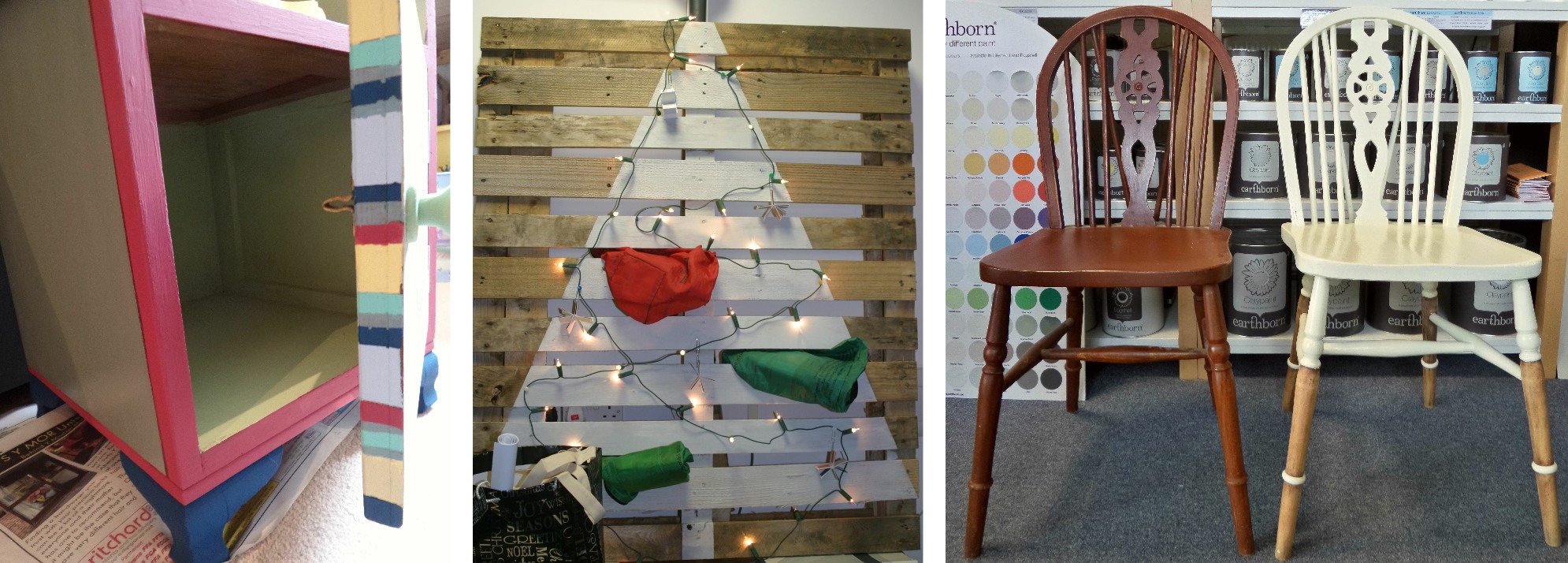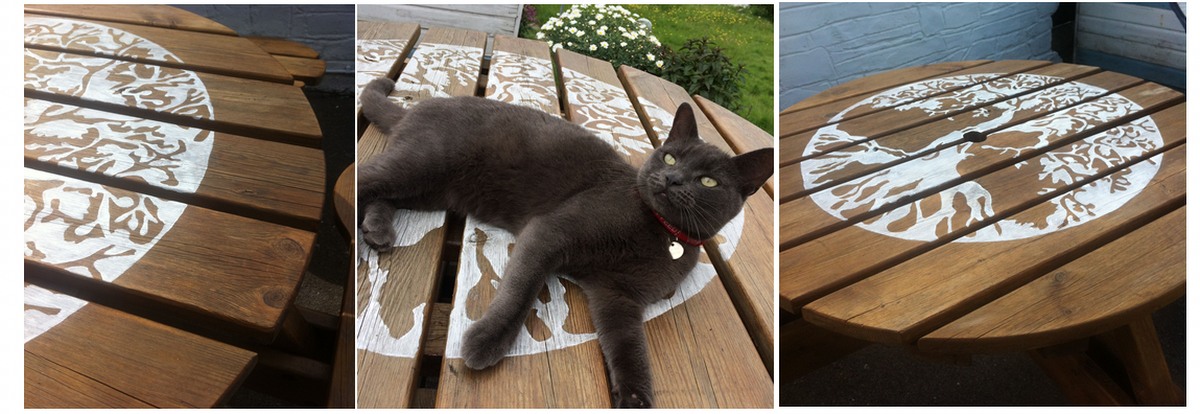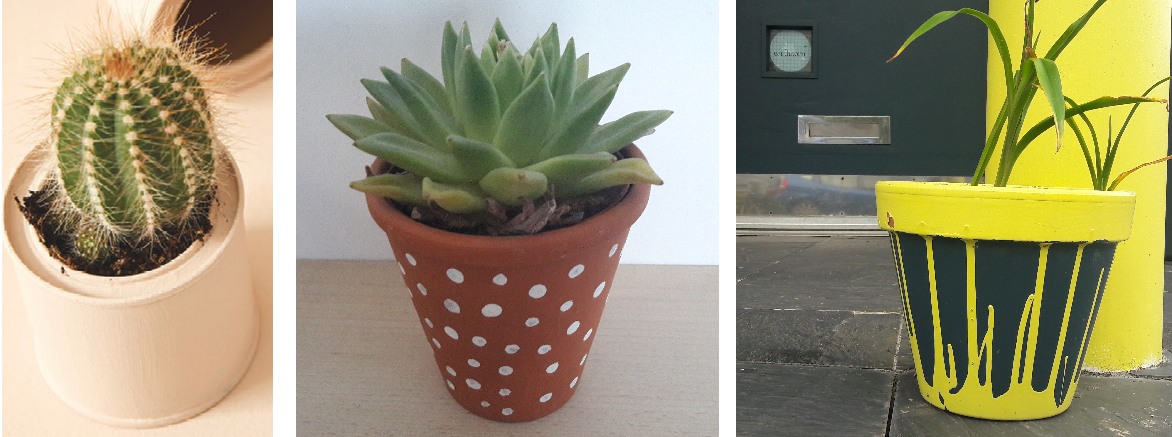What to do with Leftover Paint
Posted by Celtic Sustainables on 5th Sep 2019
So you've finished your decorating project and have some leftover paint, what to do next? In this blog post we give you the best advice on how to store paint, what to do when you open a tin of old paint and it looks wrong, where you can donate half used tins of paint in the UK, using left over paint to upcycle or "shabby chic" a piece of wooden furniture and finally, how to dispose of paint responsibly and make sure you calculate the right amount of paint for next time.

How to store leftover paint
The first question you need to ask yourself is it is whether you might need that paint again? If it's possible you will be touching up the wall or moving a cupboard or wardrobe and need that colour and finish, you need to store the paint in the best way possible.
All paint will store well for many years if you keep it away from direct sunlight, in a cool but frost free environment with the lid on. If you have done all of that, the enemy, when it comes to storing paint, is air, so do ensure the lid is on tightly.
If there is any paint on the rim of the paint tin, wipe it off so that you get a good seal and push the lid down firmly all the way around.
It's a good idea to write on the tin (the bottom of the can is a good place) in a permanent marker pen where the paint was used - just incase you forget later on.
If the paint tin is over three quarters full, some people like to store the paint tin upside down - this helps to keep air out of the paint tin as new air is far less likely to get in. If you are going to try this method, make sure the lid is on well! and beware that a paint film (skin) may form at the top (bottom when you have turned the tin the right way up) of the paint that you may not be aware of until you stir the paint up again.
If the paint tin is less than three quarters full, it is worth considering decanting the paint into a smaller air-tight tin (remembering ofcourse to label it up with all the relevant details). Alternatively you could put a piece of plastic over the top of the paint before you close the tin to help stop the paint from forming a skin.
What to do if stored paint has a skin on it
Simply remove the skin! The paint underneath should be fine. Give it a really good stir before painting. If in doubt try a small test patch first.
What to do if stored paint has separated
If paint has been stored in one place for a significant length of time it can separate to liquid at the top and other ingredients at the base. The paint, once mixed back together, should be good to go. So simply mix it together really well. If it's a larger paint pots an electric drill mixing attachment is ideal, else a good wooden stick or some customers have even used an old kitchen hand whisk!
Once mixed try a test patch before painting the whole area, just in case you need to stir it up a bit more.
What do do if stored paint has got lumps in it
If the paint has gone lumpy and no amount of whisking, stiring or mixing has made it come good. Sieve it. Our Sharon here has rescued many an old tin of paint by filtering the lumpy paint through an old pair of tights. Yes you read that correctly! Old tights or stockings are ideal for sieving paint, so don't throw them away if you know you will be decorating soon!
Beware though, if you are intending on using this paint to match a previously painted wall you may not get an exact colour match if the lumps include a lot of the pigment. Once seived make sure you try a test patch before painting the whole area to check for colour and consistency.
Donate leftover paint to friends, family or the community
If you know you are not going to need the paint any time soon, then consider offering it to friends, family or the local community. If no one you know wants your half full tins of paint, try freecycle, freegle, facebook groups or gumtree etc. Community RePaint is a great non-profit scheme which aims to redistribute paint to benefit individuals, families, communities and charities in need at an affordable cost. Find out if they have a drop-off point near you.
Use left over paint to upcycle furniture, picture frames or anything made of wood
Shabby chic, eco chic or upcycling furniture - what ever you call it. Creatively painting an old piece of wooden furniture, picture frames, or boxes is a great way of using up those last remnants of paint. It is also a great (and relatively inexpensive) way to co-ordinate the furniture in your newly decorated room. Most emulsion paints can be used up in this way.
Painting wooden furntiture is easy! Simply:
- Lightly sand the wood (to give it a "key"),
- Paint to your heart's content, and if it you haven't used an eggshell paint (or other paint specifically for wood) and you need to protect the surface a little then,
- Overcoat with a liquid wood wax, hard wood wax, or decorative furniture glaze like a crackle glaze.
Here are a few of the projects the team here have completed over the years.

We had a number of outdoor paint and wood oil tester pots to use up so made some birdboxes for our shop and storage facilities here in Cardigan, Wales. If you are interested in finding out what paints we used up, read all about it here: Team Building: Bird Box Painting.

Various furniture upcycling projects including (from left to right): Using up random tester pots to create bright edges to cupboards, Simple pallet Christmas Tree, "Eco Chic" dining room chair upcycling project (before and after) using Earthborn Eggshell Paint.

Revamping an old garden table with a "Tree of Life" stencil. Using up tins of Treatex Classic Colour and External Oak Protection Oil to great effect!
Decorate some plant pots
Most paints will also stick to clay plant pots. So using leftover paint to co-ordinate your indoor plants or patio planters to your colour scheme is a great way to empty those paint tins. Acrylic paints will also "stick" to plastic pots too, especially if you give them a light sand with sandpaper to give the surface a "key" for the paint to stick to.

From left to right: Earthborn Claypaint "Peach Baby" on metal tin, Dotty Terracotta Pot, Using up Farrow & Ball Exterior Eggshell paint to "drip" decorate a garden clay pot.
Create a piece of Art
Grab yourself a sheet of paper or canvas and get creative! The sheep in the field opposite our shop here in Cardigan inspired our Sharon's daughter to create this Andy Warhol influenced piece of art.

"Andy's Sheep" by Abi Haywood. Earthborn Claypaint on canvas
How to dispose of paint responsively
Disposing of paint can be quite a tricky thing. It will, to some extent, depend on what paint you have and whether it is still liquid or whether it has gone hard.
Some of the paints we sell here are compostable (please check the paint label, technical datasheet or Material Safety Data Sheet (MDSD) before doing this!). However some municiple composting schemes will not accept compostable paints - so if not home composting, you will also need to check with your local authority before going down this route.
Most decorating paints are not compostable. You should never put paints down the drain, sink or toilet either. Paint must be disposed of responsibly.
If the paint in the paint tin has gone hard, then the only option for you is to add it to your landfill waste bin collection. Note though, that some local authorities do not accept paint tins this way and you may need to arrange a special collection. It is best to contact your local authority to find out what to do.
If the paint in the tin is still liquid (or partially liquid) then you may be able to take it to your local household waste and recycling centre (or "the tip"). Do a quick online search to find the one nearest to you. The good news is that many "recycled" paint companies obtain their paints from these sites, so with luck your paint will end up being recycled!
How to work out how much paint you need
All in all, it's best to minimise the amout of left over paint you have. Everytime you are decorating remember to:
- measure the area accurately to get the square metres you will be painting (taking into account windows and doors),
- read the instructions find out whether you are likely to need 1, 2 or more coats of paint,
- find out the expected coverage of the paint you will be painting.
All our paint pages have handy paint calculators to help you order the right amount for the job.
What about the paint tins?
For Zero Waste Week 2019 we created this guide to recycling and upcycling paint tins: Zero Waste Week - 3 Ways to Upcycle Paint Tin Cans.


